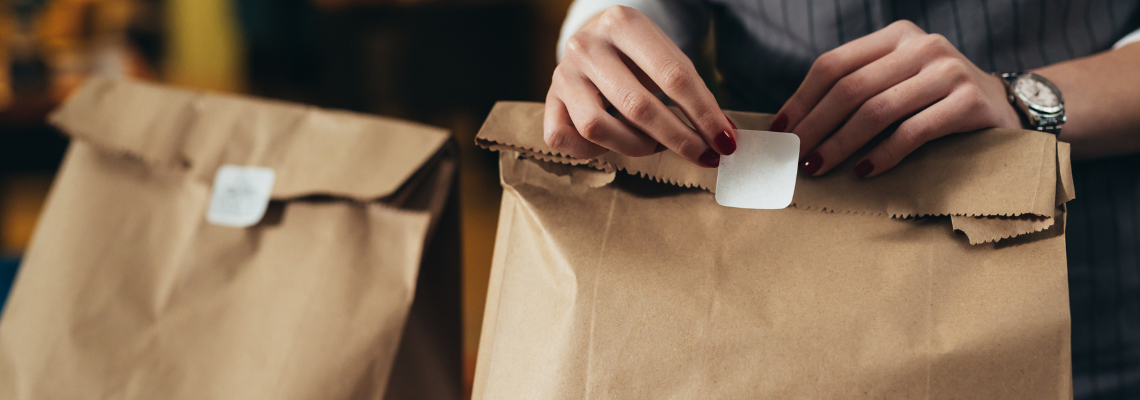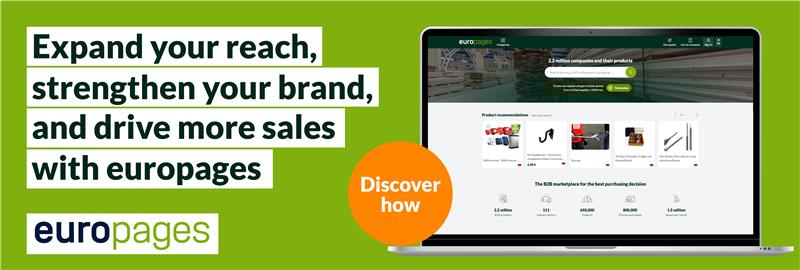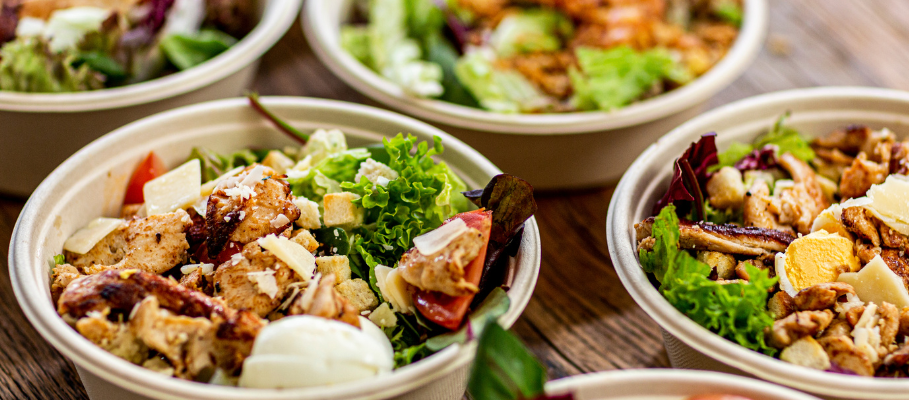Table of Contents
- The Foundation of Brand Identity: Why Your Restaurant Packaging Matters
- Beyond Aesthetics: Functionality and Sustainability in Restaurant Supply
- Customization: The Key to Unique Restaurant Packaging
- Restaurant Suppliers: Navigating the World of Wholesale Packaging Supplies
- Case Studies: Restaurants Excelling Through Innovative Packaging
- The Roadmap to Implementation: Integrating Branded Packaging into Your Restaurant
- Pro tip
- Measuring the ROI of Your Restaurant Packaging Investment
1. The Foundation of Brand Identity: Why Your Restaurant Packaging Matters
Restaurant packaging serves as a tangible representation of your brand. It is one of the first interactions a customer has with your restaurant, especially in the growing takeout and delivery market. Thus, investing in high-quality and well-designed packaging is akin to investing in your brand's image. Moreover, in an industry where competition is fierce, distinctive packaging can be the differentiating factor that sets your restaurant apart.
When customers receive their orders in packaging that is both functional and aesthetically pleasing, it leaves a positive impression. This positive experience can lead to increased customer satisfaction and, consequently, repeat business. In addition, packaging provides an opportunity to showcase your restaurant's commitment to quality and attention to detail.
First impressions are everything. How many times did you hear that sentence? In the restaurant business, this extends beyond the dining room to every touchpoint, including takeout and delivery experiences.
Your packaging is an extension of your brand identity, conveying your values, quality, and story to customers even when they're not physically in your establishment. Consistent branding across all platforms, from your website and social media to your in-house menus and restaurant packaging, creates a cohesive and memorable brand experience. This consistency helps customers recognize and remember your brand, fostering familiarity and trust.
A unified brand image across all touchpoints strengthens brand recall and builds a loyal customer base that connects with your restaurant on a deeper level.
2. Beyond Aesthetics: Functionality and Sustainability in Restaurant Supply
While visual appeal is important, restaurant packaging must also be practical and functional. The primary purpose of packaging is to protect the food during transport, maintain its temperature, and prevent leaks or spills. Restaurant suppliers are constantly innovating to create packaging solutions that meet these functional requirements while also being user-friendly.
Features like secure closures, insulation, and compartments for different food items enhance the customer experience. Durable, leak-proof containers that keep food fresh and at the right temperature are essential for customer satisfaction. The ease with which customers can open, use, and dispose of the packaging also contributes to their overall experience.
Furthermore, the choice of materials in restaurant supply plays a crucial role. Consumers are increasingly conscious of environmental issues, and businesses are responding by adopting sustainable practices. Eco-friendly packaging options, such as biodegradable or compostable materials, are gaining traction.
While sustainable options are gaining popularity, some restaurants may face challenges such as higher costs or limited availability of certain materials. Finding the right balance between sustainability, cost-effectiveness, and functionality requires careful consideration and collaboration with restaurant suppliers.
Using sustainable restaurant packaging not only reduces your environmental footprint but also resonates with environmentally conscious consumers, enhancing your brand image. This commitment to sustainability is a value proposition that can be highlighted in your marketing efforts.

3. Customization: The Key to Unique Restaurant Packaging
Customization is where restaurant packaging truly shines as a branding tool. Off-the-shelf packaging may be cost-effective, but it does little to differentiate your brand. On the other hand, custom-designed packaging allows you to create a unique and memorable experience for your customers.
The possibilities for customization are vast, ranging from printing your logo on containers to creating bespoke shapes and sizes that reflect your brand's personality. Wholesale packaging supplies can be tailored to meet your specific branding needs. By incorporating your brand's colors, logo, and messaging into the packaging design, you reinforce brand recognition and create a cohesive brand experience.
Moreover, customized packaging offers an opportunity to tell your brand's story. For example, you can include a brief history of your restaurant, highlight your commitment to using locally sourced ingredients, or share your culinary philosophy.
These small details add a personal touch that resonates with customers and makes them feel more connected to your brand. These stories are a way to differentiate your restaurant from competitors and create an emotional connection with customers. Is it worth the investment?
4. Restaurant Suppliers: Navigating the World of Wholesale Packaging Supplies
Choosing the right restaurant suppliers is crucial for securing high-quality and cost-effective wholesale packaging supplies. There are numerous suppliers in the market, each offering a wide range of products and services.
It is important to research and compare different suppliers to find one that meets your specific needs and budget. Factors to consider include the supplier's product range, pricing, minimum order quantities, customization options, and delivery times. A reliable supplier should offer a diverse selection of materials, sizes, and styles to choose from. This means that it is interesting for B2Bs.
Many restaurant suppliers offer design services to help businesses create custom packaging that aligns with their brand identity. These services can range from simple logo placement to full-scale design consultations.
Collaborating with experienced designers can help you create packaging that is not only visually appealing but also functional and aligned with your marketing goals. Taking advantage of these services ensures that your packaging is both practical and aesthetically pleasing.
5. Case Studies: Restaurants Excelling Through Innovative Packaging
Many restaurants have successfully leveraged packaging to enhance their brand image and customer experience. Here are a few examples:
Example 1: A fast-casual chain specializing in healthy salads and bowls uses vibrant, colorful packaging that reflects its commitment to fresh, wholesome ingredients. The packaging includes transparent windows that showcase the colorful ingredients, making the food visually appealing. The containers are made from compostable materials, aligning with the brand's commitment to sustainability. The packaging also features the brand's logo and a tagline that emphasizes its health-conscious philosophy. This approach not only makes the food look appetizing but also reinforces the brand's core values.
Example 2: A high-end sushi restaurant uses elegant, minimalist packaging that exudes sophistication and luxury. The packaging is designed to mimic traditional Japanese bento boxes, adding an authentic touch. Each container is carefully crafted and features the restaurant's logo subtly embossed on the lid. The restaurant uses high-quality materials that maintain the freshness and presentation of the sushi during delivery. This attention to detail enhances the perceived value of the food and elevates the customer experience.
Example 3: A family-friendly pizza chain uses playful, interactive packaging that engages customers of all ages. The pizza boxes feature games, puzzles, and coloring activities that keep children entertained while waiting for their meal. The packaging also includes fun facts about pizza and the restaurant's history, adding an educational element. This creative approach not only makes the dining experience more enjoyable but also strengthens the brand's connection with families.
These examples demonstrate how diverse restaurants can use packaging in innovative ways to enhance their brand image and create memorable experiences for their customers.

6. The Roadmap to Implementation: Integrating Branded Packaging into Your Restaurant
Implementing branded restaurant packaging involves several key steps. First, you need to define your brand identity and messaging. What are your core values? What makes your restaurant unique? What message do you want to convey to your customers?
Once you have a clear understanding of your brand, you can start exploring customization options with your chosen restaurant suppliers. It is essential to establish a budget for your packaging. Customized packaging can be more expensive than off-the-shelf options, so it is important to factor this into your overall operating costs. Determine how much you are willing to invest in packaging and explore different pricing options with your suppliers.
Next, work closely with your restaurant suppliers and designers to create packaging that aligns with your brand identity and meets your functional needs. Consider the types of food you serve, your target audience, and your sustainability goals. Choose materials, colors, and designs that reflect your brand's personality and values. Develop prototypes and test them with a small group of customers to gather feedback. Use this feedback to make any necessary adjustments before placing a large order. This iterative process ensures that the final product meets your expectations and resonates with your customers.
7. Pro Tip:
Don't underestimate the power of unboxing. Create a memorable unboxing experience by adding a personal touch, such as a handwritten note, a small free sample, or a discount code for future orders. This small gesture can go a long way in building customer loyalty. This attention to detail can transform a simple meal delivery into a delightful experience that customers will remember and share.
8. Measuring the ROI of Your Restaurant Packaging Investment
Ultimately, B2B professionals want to know if an investment is worth it. How do you measure the return on investment (ROI) of your restaurant packaging?
There are several metrics you can track to gauge the effectiveness of your packaging strategy. Customer feedback is a valuable indicator. Monitor online reviews, social media comments, and customer surveys to see how customers are responding to your packaging. Positive feedback indicates that your packaging is resonating with customers and enhancing their experience.
Another key metric is customer retention. Are customers returning for repeat business? If so, it could be a sign that your packaging, along with other factors, is contributing to customer loyalty. Track the number of repeat customers and compare it to the period before implementing your new packaging. Additionally, monitor your sales data to see if there has been an increase in sales since implementing your branded packaging.
While it can be challenging to attribute sales growth solely to packaging, a positive correlation can suggest that your packaging is having a positive impact. For further information on this subject, you can refer to this insightful article on Forbes, Psychology Of Product Packaging, How It Plays Into Profitability
For more resources on packaging, read these insightful articles:
- Deep Dive into Soft Drink Packaging: Aluminum Machining and Returnable Bottles
- Science Fiction or a Sustainable Reality? The Rise of Edible Food Packaging
- Supplier evaluation: The two most common methods
Conclusion
In conclusion, restaurant packaging is a powerful tool that can significantly impact your brand's success. By investing in well-designed, functional, and customized packaging, restaurants can enhance brand recognition, foster customer loyalty, and differentiate themselves from the competition. While there are costs and challenges associated with implementing branded packaging, the potential benefits far outweigh the drawbacks. As the food service industry continues to evolve, embracing innovative packaging solutions will be essential for restaurants looking to thrive in a competitive market.
Find Restaurant Packaging solutions for your Project!
- Atlas Export Packaging offers eco-friendly, custom packaging solutions globally. This Istanbul-based manufacturer provides sustainable options like reusable bags, custom food containers, and takeout boxes, prioritizing both quality and environmental responsibility. Contact them for your worldwide packaging needs.
- Exonia Packaging, a Romanian packaging manufacturer founded in 2003, specializes in innovative, sustainable BIO packaging for food and pharma, serving clients like Coca-Cola and P&G. They produce over 100 million pieces annually, including paper bags and sacks.
- Sampackt Packaging, a leading Turkish supplier, provides innovative, recyclable packaging solutions globally, including food packaging, bags, doypack pouches, and machinery. Committed to sustainability, they offer advanced materials like PCR Granules LDPE and aim to expand their customized export services worldwide.
- XENOS Packaging, based in Greece, provides customizable, high-quality packaging solutions across Europe, including various types of bags and food packaging, produced in their advanced facilities. With over 30 years of experience, they offer rapid delivery, competitive pricing, and a focus on turning packaging into effective marketing tools for your brand.
- Bleue Comme une Orange Packaging, a French company established in 1978, designs and produces certified (Certipharm, ISO, PEFC, FSC) compact cardboard packaging for various industries, including pharmaceutical, cosmetic, and food. They offer diverse printing options, short lead times, and manage both small and large volume projects.
- Urspack Factory, a Romanian manufacturer, specializes in biodegradable cardboard packaging for various industries, using state-of-the-art technology and environmentally friendly materials. Urspack has earned the trust of major restaurant chains across Europe by ensuring quality and promptness.
- Saarpor Klaus Eckhardt GmbH Neunkirchen Kunststoffe KG is a third-generation family business producing SECUPOR® technical molded parts, DECOSA® decorative items, and CLIMAPOR® insulation. They offer comprehensive customer support and specialize in processing various materials like EPS, XPS, PUR, and EPP.
- CCAG, based in Morbihan, France, specializes in customizable promotional products and printing for various industries, particularly for restaurants and food service businesses. Their offerings include personalized placemats, finger bowls, cutlery pouches, napkins, promotional bread bags, and other customizable promotional items like textiles, all designed with the client's branding in mind.
- Food Paper Portugal, established in 2005, specializes in manufacturing customized, biodegradable, and compostable food packaging, including paper bags and cups, for Take Away and Delivery. Using certified, high-quality, food-grade materials like virgin pulp and Kraft paper, they collaborate closely with clients to develop bespoke packaging solutions that are both sustainable and effectively promote their brand.
- Auguste BLOCH, a family-owned business founded in 1811 and now part of HIGY, is a French company specializing in culinary aids, particularly known for its Nutriscore A-rated breadcrumbs. With a focus on healthy ingredients and a commitment to customer needs, Auguste BLOCH offers a range of products including breadcrumbs, cereal mixes, and oatmeal flakes, available in various packaging options for industrial clients, wholesalers, and restaurants.
- DROPACK DROLSHAGENER VERPACKUNGS GMBH is a supplier of high-quality food and non-food packaging solutions, offering a seamless process from planning to delivery and an excellent price-performance ratio. Our innovative graphic team provides both standard and customized packaging options in any shape, color, and size, ensuring flexibility even for short-term requests.
- ATLAS EXPORT, a Turkish company specializing in luxury, food, and eco-friendly packaging, offers a wide range of FSC, ISO 9001, and ISO 22000 certified products to distribution, import, wholesale, and advertising professionals. They provide personalized and standard packaging solutions, constantly innovating and offering comprehensive logistics support for delivery to your warehouse.


